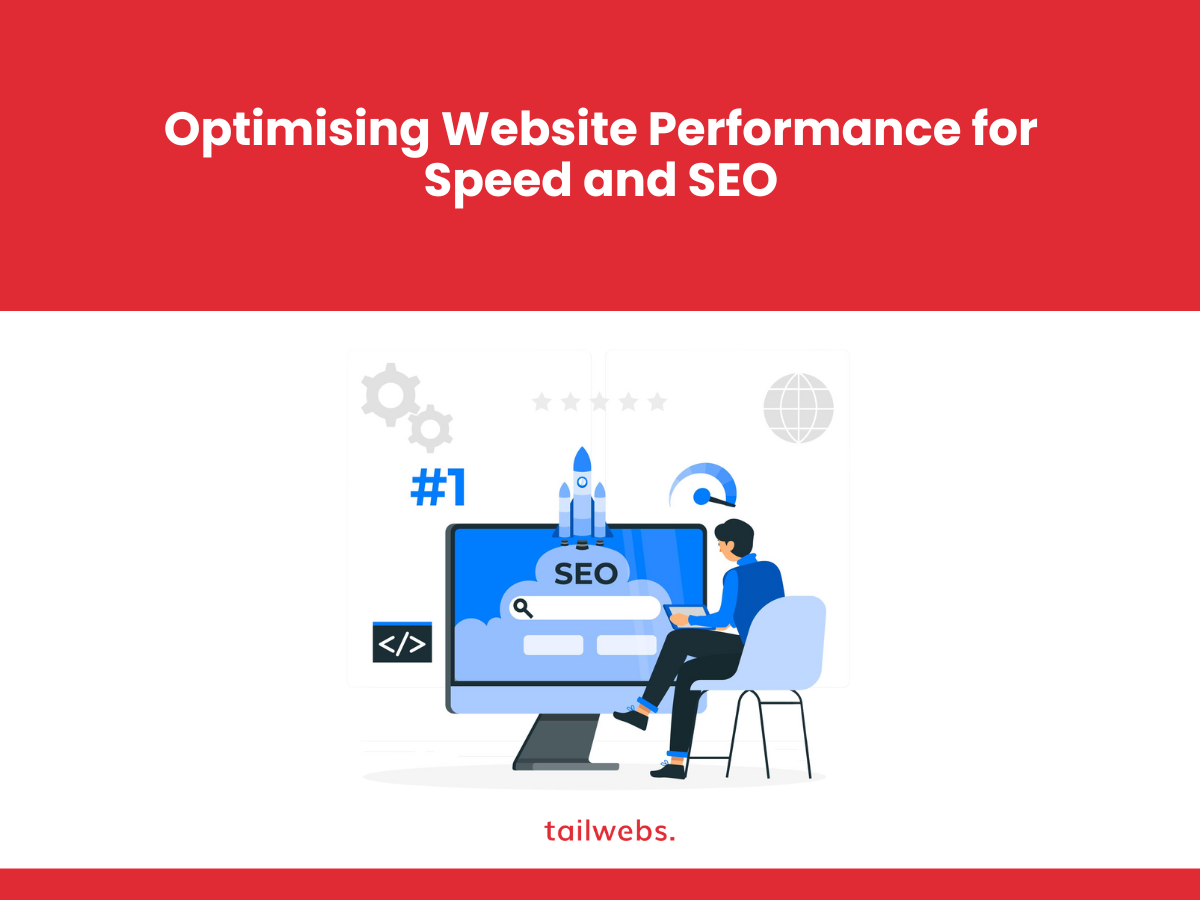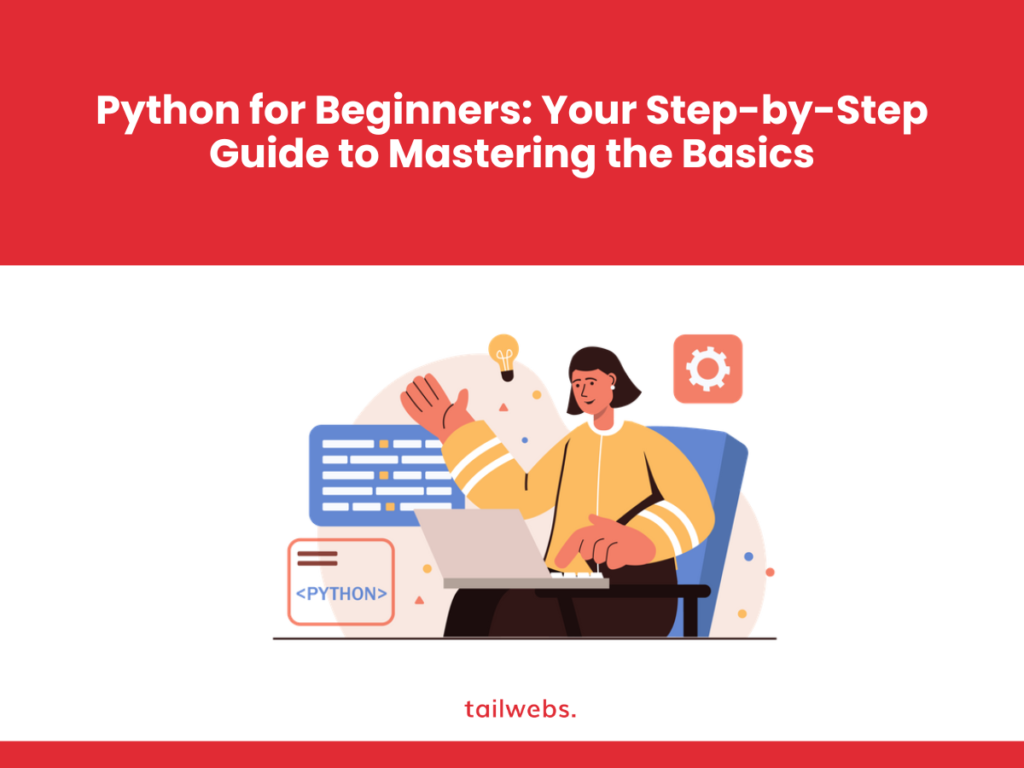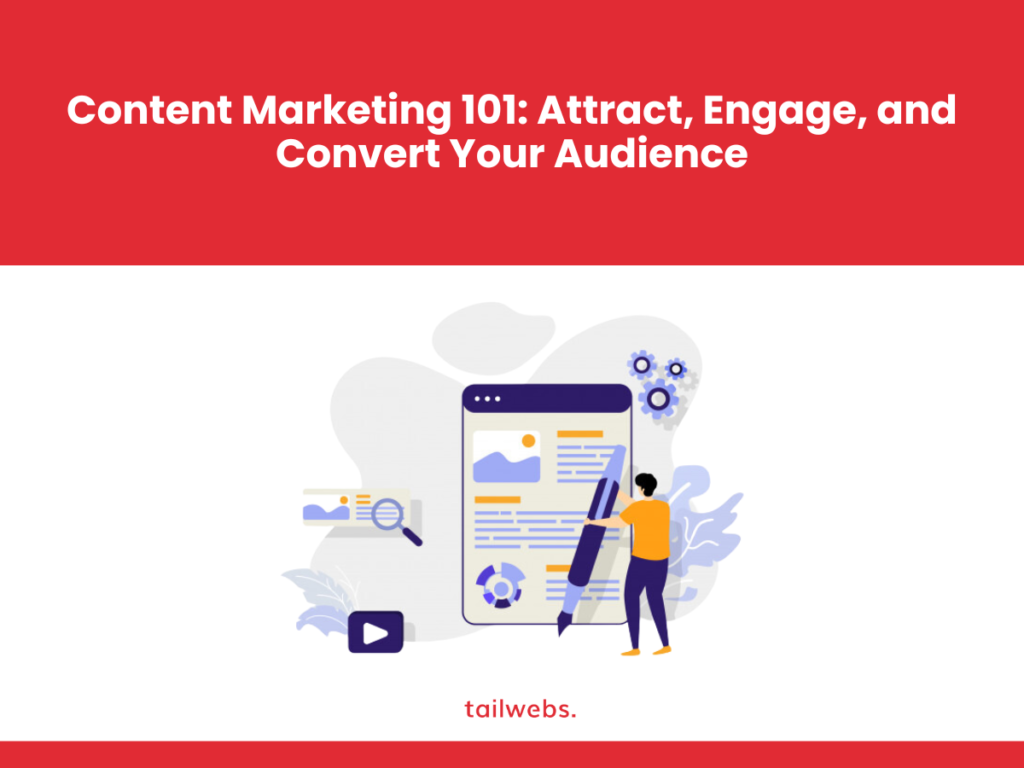Here’s a brief outline of what we could cover for the topic “Optimising Website Performance for Speed and SEO”:
Introduction:
- Grab attention with a statistic highlighting the importance of website speed and SEO (e.g., “A 1-second delay in page load time can lead to a 7% decrease in conversions”).
- Briefly explain the connection between site speed and SEO, emphasising how Google prioritises fast-loading websites in search rankings.
Optimising Website for Speed:
Core Web Vitals:
Define and explain the importance of Google’s Core Web Vitals metrics (Largest Contentful Paint, First Input Delay, Cumulative Layout Shift) for measuring website speed.
Image Optimization:
Discuss strategies for optimising image file size without compromising quality, such as compression, resizing, and choosing the right format (e.g., JPEG vs. PNG).
Reduce HTTP Requests:
Explain how minimising the number of elements a page needs to load (e.g., scripts, stylesheets) can improve speed.
Leverage Caching:
Discuss the benefits of browser caching and using a Content Delivery Network (CDN) to serve static content from geographically distributed servers.
Minimise Render-Blocking JavaScript:
Explain how deferring non-critical JavaScript can prevent it from delaying page rendering.
Optimise Code:
Highlight the importance of minifying HTML, CSS, and JavaScript code to reduce file size.
Choose the Right Hosting Provider:
Explain how investing in a reliable and fast web hosting provider can significantly impact speed.
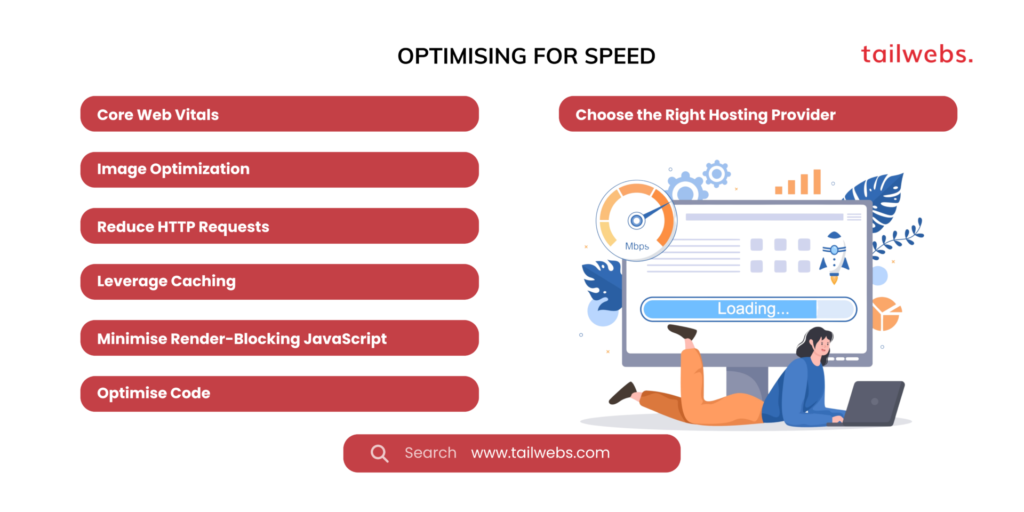
Optimising for SEO:
On-Page SEO:
Discuss optimising page titles, meta descriptions, header tags, and internal linking with relevant keywords for search engines.
Mobile-Friendliness:
Emphasise the importance of having a responsive website that adapts to different screen sizes and devices, as Google prioritises mobile-friendly sites.
Technical SEO:
Briefly mention the importance of having a clean and crawlable website structure, fixing broken links, and ensuring robots.txt is up-to-date.
Content Quality:
Highlight the importance of creating high-quality, informative, and engaging content that satisfies user intent and keeps them on your website.
Backlinks:
Discuss the importance of building high-quality backlinks from other websites to improve your website’s authority and ranking potential.
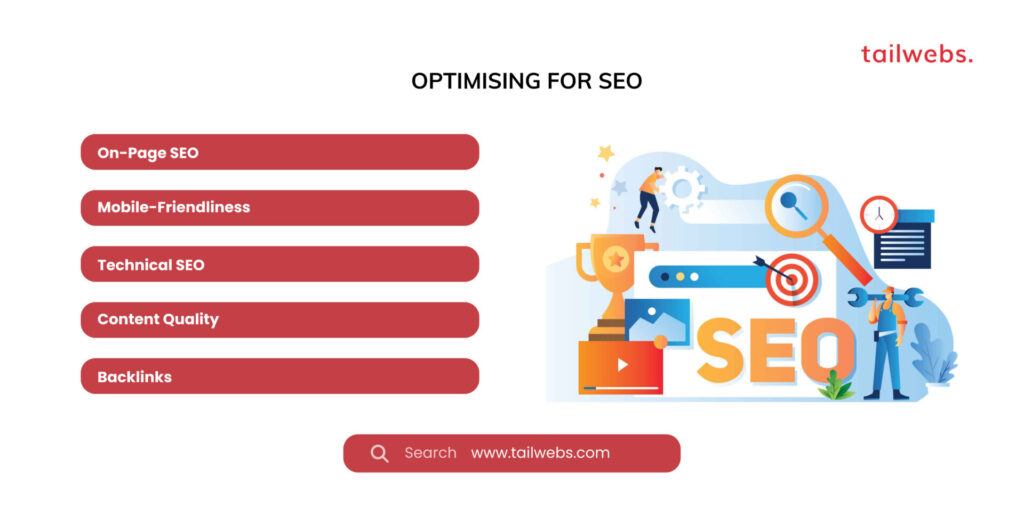
Tools and Resources:
- Recommend helpful tools and resources for website speed and SEO analysis, such as Google PageSpeed Insights, GTmetrix, and Moz.
- Include screenshots or visuals of these tools to demonstrate their functionality.
Conclusion:
- Summarise the key takeaways and emphasise the benefits of optimising website performance for speed and SEO.
- Encourage readers to take action and implement the strategies discussed in the blog post.
- Include a call to action, such as inviting readers to leave comments or share their experiences with website optimization.
Imagine this: you click on a promising website, eager to explore its offerings. But instead of a seamless digital experience, you’re greeted by a frustratingly slow loading screen, each second ticking by like an eternity. In today’s lightning-fast internet age, patience is a luxury users rarely have. A mere one-second delay in page load time can lead to a 7% decrease in conversions, sending those precious visitors bouncing away before they even begin to engage.
This is where website performance optimization takes centre stage. It’s the art of ensuring your website loads swiftly and flawlessly, keeping users captivated from the moment they click. And it’s not just about user experience; it’s a gateway to SEO success. Google, the gatekeeper of online visibility, prioritises fast-loading websites in its search rankings. A leisurely website, no matter how beautiful or content-rich, risks getting buried in the depths of search results, forever out of sight and mind of potential customers.
So, let’s break down the magic formula for optimising your website for both speed and SEO. Buckle up for a high-octane journey, fueled with stats, tactics, and actionable tips to transform your website into an SEO-dominating speedster.
Speed Demons: Unleashing Your Website’s Inner Cheetah
First things first, we need to diagnose the bottlenecks slowing down your digital masterpiece. Enter Core Web Vitals, Google’s trio of metrics that measure a website’s loading experience:
Largest Contentful Paint (LCP):
How long it take for the largest element on your page to load. Aim for under 2.5 seconds, or prepare for user impatience.
First Input Delay (FID):
How responsive your page is to user interaction (clicks, taps, etc.). Strive for a FID under 100 milliseconds, or risk frustrating user clicks turning into rage clicks.
Cumulative Layout Shift (CLS):
How stable your page elements are during loading. Keep CLS below 0.25 to avoid confusing and frustrating users with content jumping around.
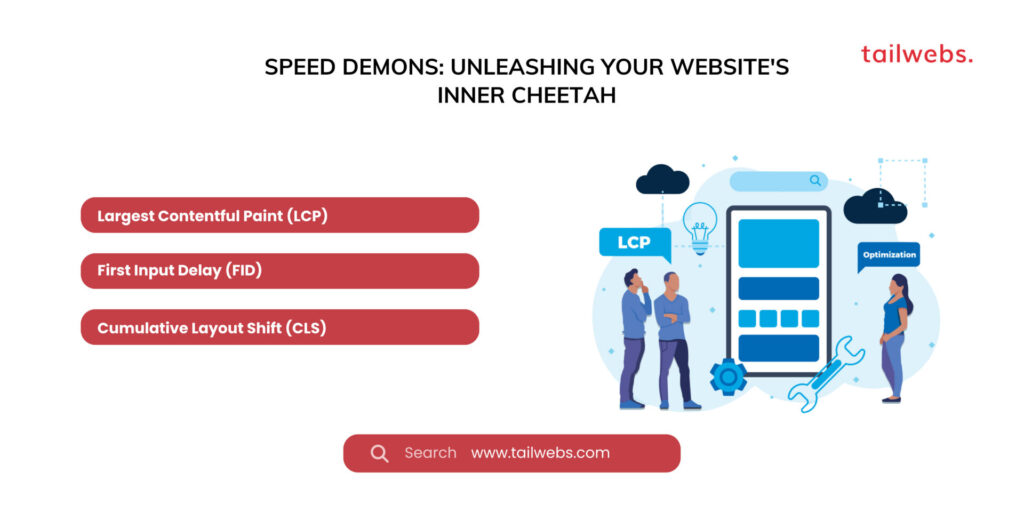
These metrics are your roadmap to speed optimization. Once you identify the culprits slowing you down, it’s time to unleash the performance-boosting arsenal:
Image Optimization: Images often hog the bandwidth highway, but that doesn’t mean you have to banish them altogether. Reduce file size without sacrificing quality by:
- Compressing images with tools like TinyPNG or Squoosh.
- Choosing the right format: JPEG for photographs, PNG for graphics with transparency.
- Resize images to fit your page layout.
HTTP Request Reduction: Every element on your page, from images to scripts, requires an HTTP request, adding to the loading time. Minimise the number of requests by:
- Combining multiple stylesheets or scripts into one.
- Using CSS sprites to group small images into a single file.
- Lazy loading of non-critical content below the fold.
Caching for Speedy Returns: Think of caching as a memory bank for your website. Frequently accessed files are stored locally, making subsequent visits super-fast. Implement both:
- Browser caching: Tell browsers to store static content like images and scripts for future visits.
- Content Delivery Network (CDN): Distribute your content across geographically distributed servers, minimising latency for users worldwide.
JavaScript Detox: Render-blocking JavaScript can cripple your page load. Optimise your JavaScript usage by:
Minifying code:
Remove unnecessary spaces and characters.
Deferring non-critical scripts:
Load them after the initial page content appears.
Async loading:
Load scripts simultaneously without blocking page rendering.
Code Minification:
Think of your website’s code as a verbose novel. Minify CSS, HTML, and JavaScript to remove whitespace, comments, and other non-essentials, shrinking their size and improving loading times.
Hosting Matters:
Your web hosting provider is the foundation of your online speed palace. Choose a reliable and high-performance provider with a proven track record of fast servers and robust infrastructure.
SEO: Ascending the Search Engine Olympus
While speed fuels your website’s engine, SEO provides the map to navigate the vast search landscape. Optimise your website for search engines with these key tactics:
On-Page Optimization: Make friends with keywords, your golden tickets to search engine visibility.
- Target relevant keywords throughout your page titles, meta descriptions, header tags, and content.
- Structure your content logically using headings and subheadings for improved readability and crawlability.
- Internal linking is your website’s internal compass, guiding users and search engines between related pages.

